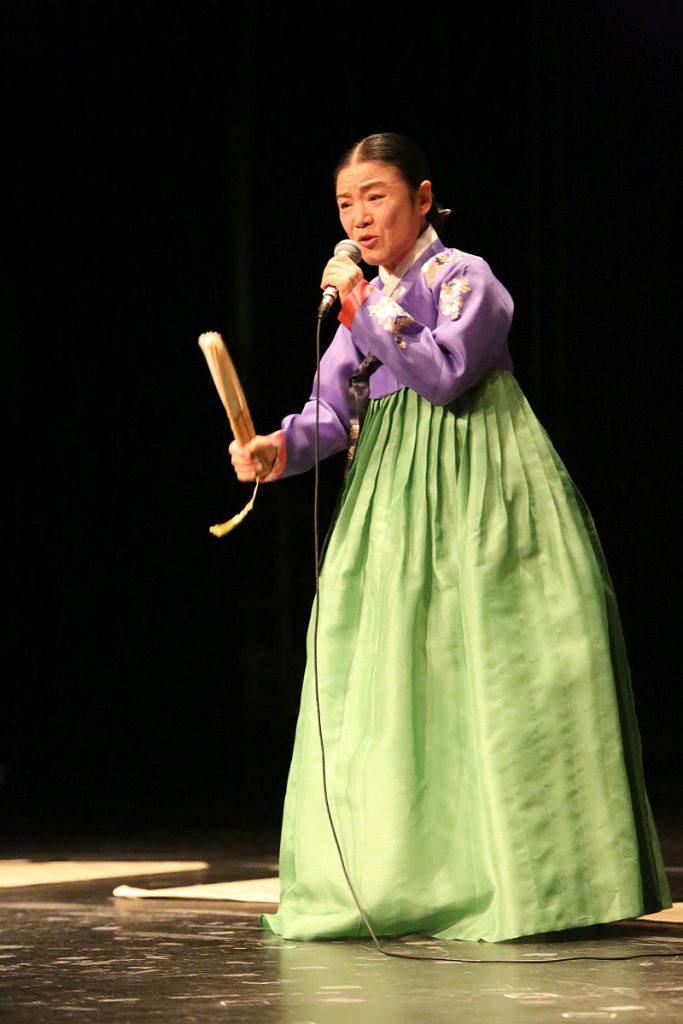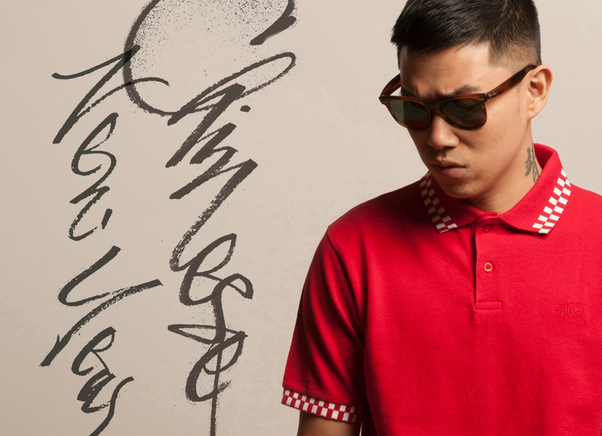by STEVE HAN
It’s a grandiose title. Every time South Korea’s renowned pansori singer Ahn Sook-sun makes a public appearance, the first thing that’s mentioned alongside her name is her title: the “living cultural asset.”
Designated by the South Korean government, the living cultural assets are an elite group of individuals considered the best performers of the country’s traditional dance or music. While they’re given lifelong government support, they are also obligated to share and spread their art and expertise throughout the country and the world.
Considered the icon of pansori, Korea’s traditional musical storytelling, Ahn, 65, did her part to share her craft with visitors of the Los Angeles County Museum of Art (LACMA) last Saturday, during the closing weekend of its landmark Joseon Dynasty art exhibition. She was joined by her ensemble for the riveting hourlong performance.
During an interview prior to taking the stage, Ahn described pansori as a “one-man opera,” where the stories are told orally without formal musical notation.
“Pansori is part of the Korean tradition, but it’s something that anyone from anywhere in the world can understand and feel,” said Ahn, who has been performing pansori around the globe since 1989. “Every performance is focused on telling a story. So anyone could relate to a pansori performance for the same reason any Korean person could relate to the story of Romeo and Juliet.”
For all its potential resonance, it has been well over a century since pansori experienced something of a golden age. The decline of its popularity among the general public began during the Japanese occupation in the early 20th century as Korean traditions and history were recklessly disregarded, even banned, and then westernization set in thereafter.
Ahn admitted that it has been challenging to try to reassert pansori into the public consciousness in an age when K-pop, which has been something of a global phenomenon over the last decade or so, has as many English lyrics as Korean.
“Everything in our culture has been diversified, from language to lifestyle to diet,” Ahn said. “With pansori, a lot of the language in it is based off of hanja (incorporation of Chinese characters into the Korean language). But now, English is preferred over hanja. Even when we use Korean, we no longer use saturi (regional dialects) because it’s perceived that only the uneducated people speak that way.”
Born in the rural city of Namwon, South Korea, in 1949, Ahn was raised by a family with a keen musical sense. She began learning the gayageum (Korea’s 12-string instrument) at age 8 from her aunt and performed on stage while she was still in elementary school. As Ahn grew older, she started learning from Korea’s finest pansori singers and mastering her craft. Today, she is designated as South Korea’s living cultural asset for gayageum byeongchang, performing pansori while playing gayageum.
“There’s history in our language,” Ahn said. “Pansori is what preserves our traditional language and history, but to use it to communicate with the audience today is difficult. I always try to find ways to use pansori to preserve our history, philosophy, mind and soul of the Korean people. We have to make sure that we don’t lose these things.”
That is why Ahn says she feels proud today when she sees the likes of Song So-hee and Park Ae-ri, South Korea’s young star pansori singers. Both Song and Park are garnering a sizable following from the mainstream by staying true to their roots, but also actively collaborating with artists of other genres and expanding their musical boundaries.
“Pansori could go along really well with all kinds of genres,” Ahn said. “I’ve also performed with the orchestra before. We created a beautiful sound. I consider pansori as a portrait of Korean people’s lives through history. It’s a drawing made with sound. My dream now is to make ways to get more of today’s people to relate to it.”
Photos courtesy of LACMA











